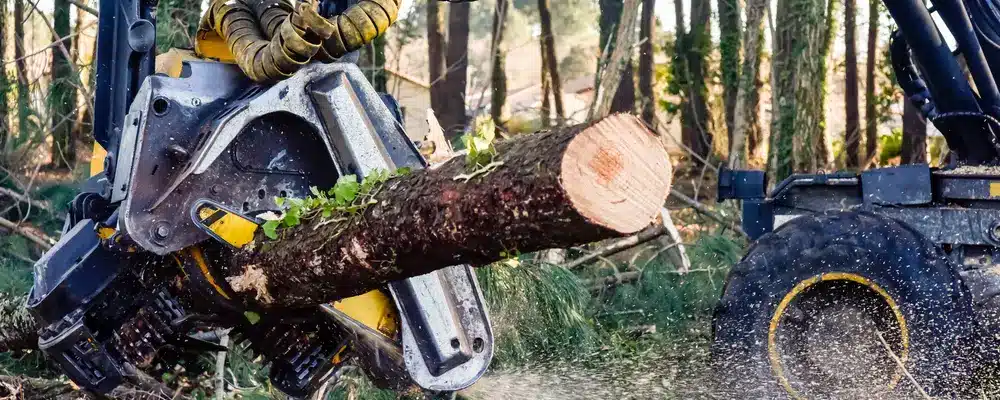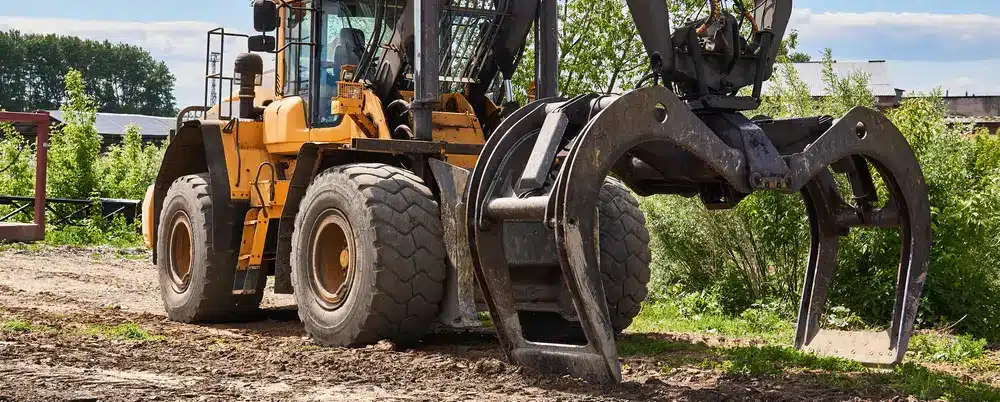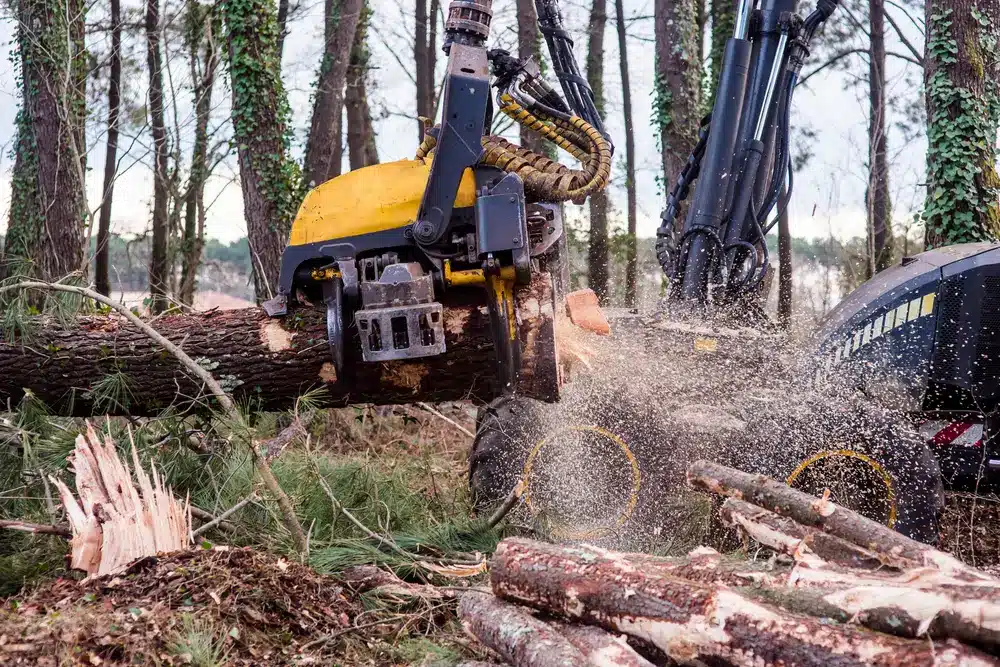With the forests surrounding Toulouse experiencing a surge in sustainable land management projects, choosing the right equipment has never been more crucial. From storm oak clearing to wildfire pine stand thinning, pick your project – and learn when to use felling shears vs. Cutting grapple. Let’s get it sorted for your project.
Choosing the right tool
Matching the tool to your job is looking at the primary task—felling, delimbing or simply moving logs. Felling shears are great for quick, linear cuts on thick trees and work best for tasks requiring swift felling with one firm squeeze. Cutting grapples are capable of more—holding, sorting and even loading logs—so they suit projects where you need to transport and pile wood as well.
Cutting capacity is crucial. Felling shears chop through trunks 50 centimeters wide, and sometimes more, but cutting grapples tend to have a little less cutting teeth for one pass. Grapples compensate with superior grip and control, assisting you to lift, turn, and move logs with less danger of dropping them. Maneuverability is important on tight sites or slopes. Shears are usually heavier and less nimble, but grapples can have a wider range of motion.
Always see if your machine can take the tool. Shears and grapples both require strong hydraulics. It’s wise to verify the pressure and flow rates your loader or excavator supplies. Not all machines accept every attachment, so check out mounting systems and ensure hydraulic lines align properly.
Operator safety boils down to integrated guards, accessible controls, and functional emergency stops. Good tools employ rugged steel and reinforced handles to absorb punches and marathon days. Anti-vibration grips and balanced weight reduce strain—critical if you’re laboring for hours. On any forestry job, don’t skip PPE: helmets, goggles, and hearing protection are a must.
To newbies, more basic, hands-on tools—imagine loppers or handsaws—are less dangerous and easier to master. Keeping everything sharp and clean and checked after every use is what keeps your tools working longer. Picking the right tool, and caring for it, protects work and advances the work faster.
Project considerations

Deciding between felling shears and a cutting grapple is a project consideration. The ideal tool for the task usually depends on tree size, species and density. Some tree shears chop through thick trunks, working on trees as wide as 500 mm. Remaining are preferred for small bushes or softer woods. A dense forest of mixed species may require something with more reach and power, but open land with scrubby undergrowth may settle for a smaller, lighter shear. Know your machine’s limits, like chipper or shear size, so they correspond to the trees you want cut. For instance, if you tend to have primarily 250mm trees, a 300mm shear or grapple is a nice match.
Terrain and site access are a huge factor in selecting the appropriate equipment. High or rocky terrain could restrict the kind of machine that you can use. In confined locations, a small grapple with a powerful rotation unit provides you with more flexibility. Newfangled grapples can rotate a complete 360, which assists when you’re needing to work around obstructions or prune in tight areas. If your site has many small trees, a harvesting head that can harvest and slice multiple stems simultaneously conserves labor and fuel.
Project scale is another crucial consideration. For one tree, or a small spot, a basic tree shear with a stiff frame does the trick. For those big jobs, like clearing a huge lot, you need options that keep pace—whether it’s a rotary frame for more nimble maneuvering or a grapple that can keep cutting non-stop. Consider the wood chipper’s size, as well. Chippers run from 230mm to 500mm wood, so match your chipper to your primary tree size.
It’s not about environmental impact. Heavy machines can upset the ground or harm other trees nearby that you want to preserve. Rotary frames help reduce that risk by allowing you to slice more precisely. Choose the equipment that has the lowest earth disturbance for your location.
Importance of selection
The correct selection of tree work tools determines how efficient and safe you accomplish the work. Felling shears slice right through whole trees with a single fierce squeeze, while a cutting grapple can grasp, relocate and trim branches. When matched to the right job, they help expedite work, reduce downtime, and keep jobs on schedule. For instance, if you’re clearing a big field, felling shears save you time. When you need to buck or load logs, a cutting grapple accomplishes more in a single pass. Selecting the appropriate size and power for equipment such as knuckleboom loaders or brush chippers makes a difference — less wear and tear, easier operations.
Smart selections translate into safer worksites. Employing a grapple saw truck appropriately sized for the work reduces the potential for slips, pinches or dropped loads. This is crucial for crews operating in tight locations or adjacent to traffic. Safety, always first, whether you’re renting for a day or buying for daily use. Seek quality in things such as root grapple attachments because hard welds and rugged steel weather tough assignments and endure.
Matching tools to tasks safeguards your equipment. If you reserve a root grapple for heavy digging exclusively when it’s engineered for it, you prevent bent teeth or broken joints. This means you save on repairs and squeeze more years from your investment. When timber quality counts, such as for lumber or export, the correct blade leaves neater cuts, with less bark ripped or wood splintered. A tree spade, for instance, will hold roots intact so trees are more convenient to replant.
Good selection saves money, too. Renting makes sense if you just need a tool one time, but for recurring tasks purchasing pays. The right selection results in a more efficient process, reduced excess, and premium output.
Key benefits

Choosing between felling shears and cutting grapples for forestry projects affects the speed and safety of your work. The proper tool will assist you in attacking and trimming trees, shrubs and brush with less time and less strain. Take, for instance, felling shears which fell trees and bushes of various sizes. A few of them will even allow you to trim multiple stems at once. This assists you in breaking sections swiftly, regardless if you’re cleaning up a trail or preparing ground for construction. Cutting grapples, meanwhile, clamp and retain the material post-cut. This gives you more control over where the tree falls or how you stack branches. It prevents damage to other trees, buildings or trails.
Both eliminate the manual labor. You don’t need as many chainsaw wielding crew when you use machines with the appropriate attachments. This reduces the potential for injuries and it lightens the workload of operators. Contemporary designs make the cab quiet and smooth, that way operator can work longer without strain. Stump grinders and brush cutters as well. Stump grinders grind out stumps under the ground, leaving the area clear and safe for new planting or construction. Brush cutters cut thick brush and saplings, accelerating land preparation.
Precision is an obvious benefit. With a good cutting grapple, you can put each log down wherever you want. That’s key if you have to separate wood by size or species, or are working in cramped areas. Forwarders and knuckleboom loaders assist in transporting big logs without skidding, reducing time and maintaining cleanliness. The right tool accelerates this cycle and reduces wear and tear on your machines. Long-term, that translates into reduced fuel expenses and reduced repair downtime.
Tool types
Felling shears are built for one main job: cutting through standing trees fast and with control. The blades are thick and strong, arc-shaped to hug the trunk. This form maintains the tree on position while the shear nibbles through wood in a single action. These tools attach to large machines, such as excavators or feller bunchers, that roll up and stack the felled trees. Most felling shears don’t grab or move the tree after the cut. They simply gash it and drop it. That makes them a favorite for work where those trees have to hit the dirt straight and safe like — clearing really tall timber, or thinning out stands for growth.
Cutting grapples, by nature, do a little more. They clip, but they hold. The grapple arms wrap around the trunk or limbs, gripping firm pre- and post-cut. The blade is usually a straight or curved edge, not as thick as a felling shear, but sharp enough. Once cut, the arms maintain grip, allowing you to swing, stack or load the wood immediately. This dual-use is what makes them a clever option for hybrid projects—such as clearing brush, cutting or hauling loose wood. Cutting grapples tend to work well on excavators, knuckleboom loaders, or even skid steers, so crews can alternate between cutting and moving, without changing tools.
Felling shears and cutting grapples appear different. Shears have big, chunky blades and a frame built for brute force, and cutting grapples have lighter frames, more moving parts, and slender arms. Every tool fits into a larger ecosystem of lumberjack equipment. For instance, post-timberfall, you can deploy skidders to skid trunks, forwarders to haul logs, stump grinders and brush chippers. Tree spades take care of transplanting and tree shears cut small trees and brush.
